The Flag of Uganda, adopted at independence in 1962, has remained a constant representation and source of national pride. This is despite the country’s often turbulent history and politics since.
After some initial debate over its design, the Ugandan flag is now proudly displayed across the country and celebrated for its distinctive simplicity, use of African colours, and prominence of the Ugandan Crane in the centre. It is a vibrant and meaningful symbol of the country’s identity, unity, and future, containing powerful national motifs.
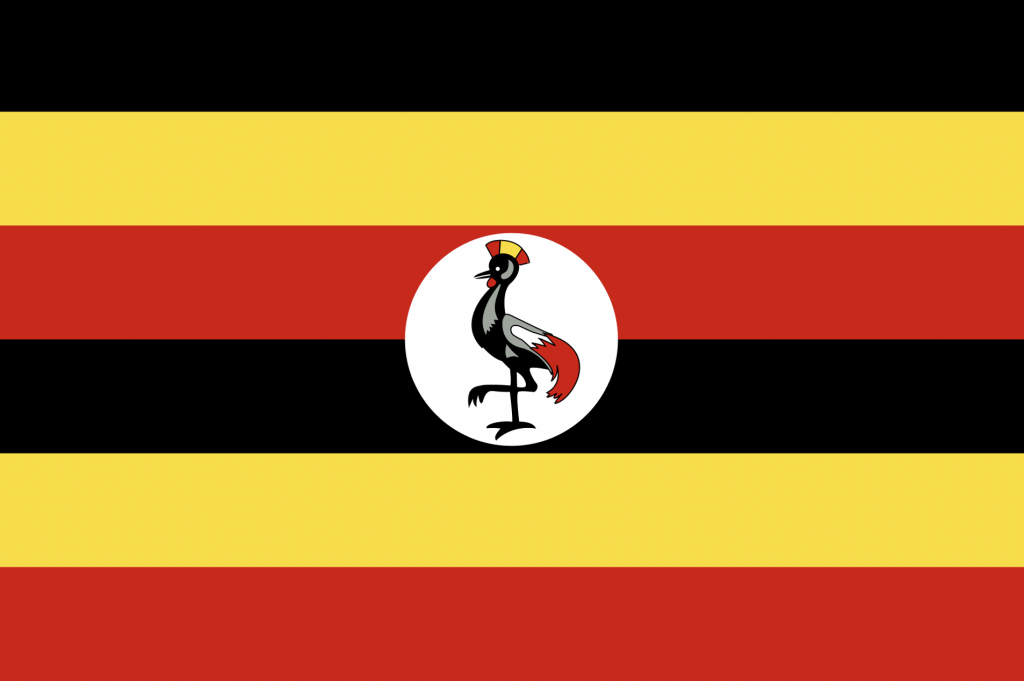
Here’s a brief history of how the modern Ugandan flag came into being, the flags used before the country achieved self-governance, and what it represents today.
Table of Contents
Flags used in Uganda before independence:
Before Uganda gained independence in 1962, the region was controlled by the British as a protectorate, which started in 1894.
Practically, this meant that the independent kingdoms within modern-day Uganda maintained a degree of independence. In exchange, the British authorities were allowed by the various kings to control the region’s defence, foreign affairs, and other provisions such as trade and permission for Christian missionaries to operate.
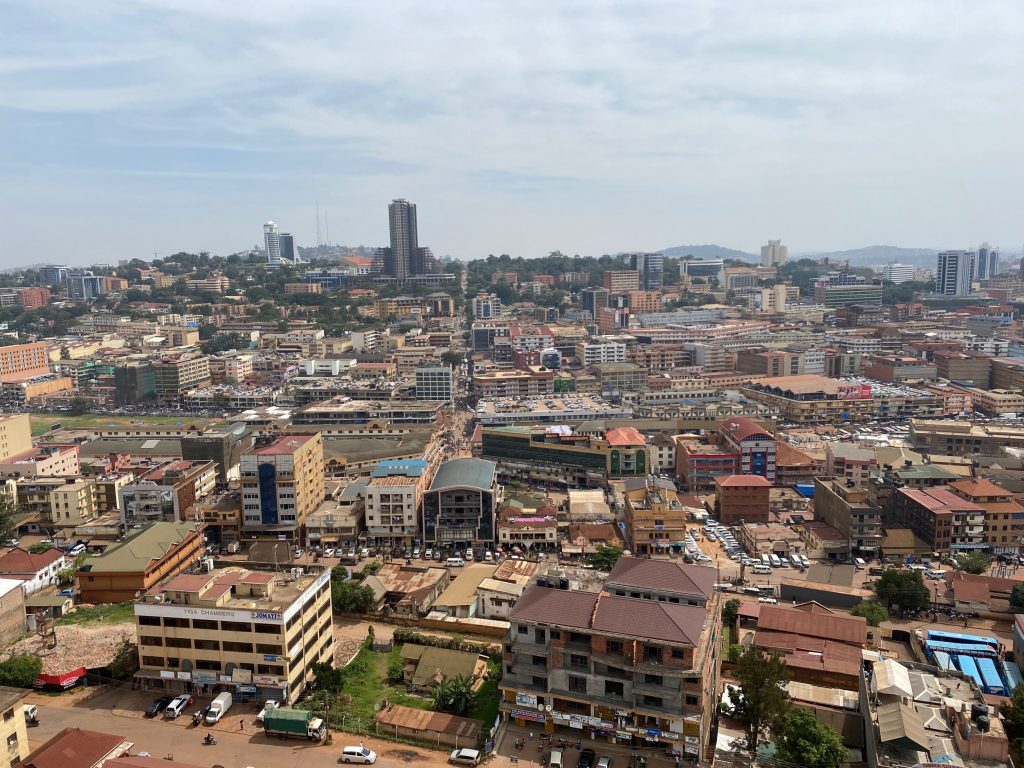
The protectorate was centred around the largest and most populous of these divisions, the Buganda Kingdom. They controlled the land surrounding the capital city, Kampala, as well as Entebbe and much of the fertile region around Lake Victoria.
During this period, the Union Jack of the British Empire was the official flag. However, the Ugandan Protectorate had its own distinctive flag, which was based on the standard Blue Ensign used across British colonial territories.
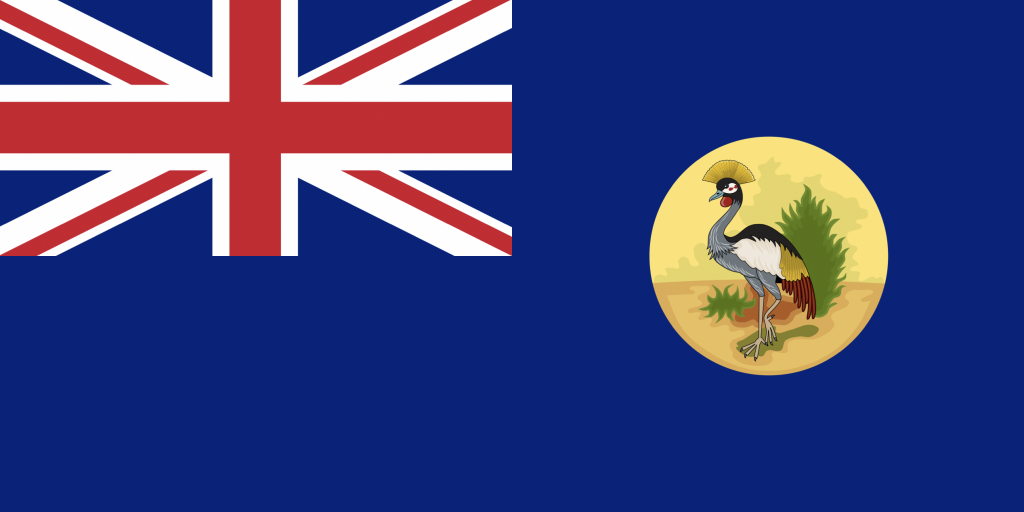
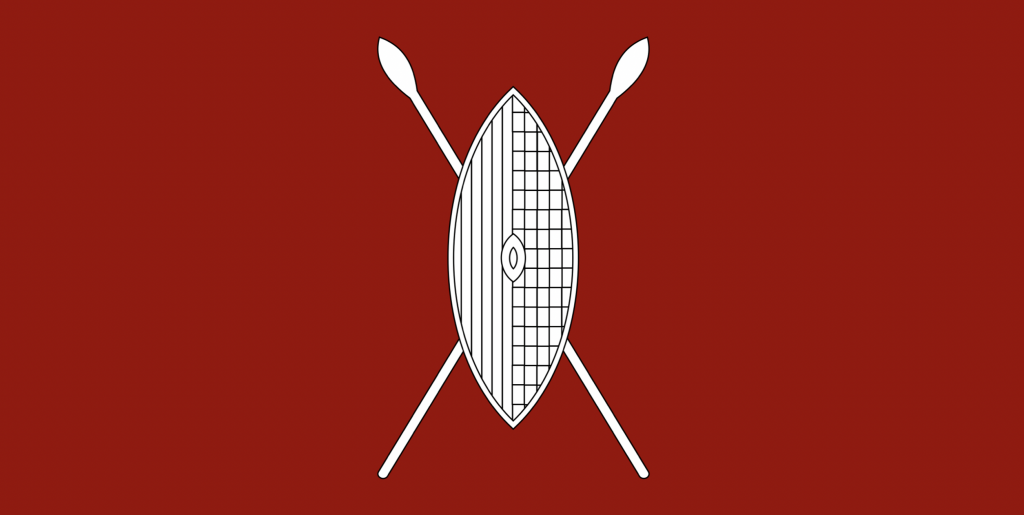
What set Uganda’s design apart was the inclusion of a colonial badge featuring a grey crowned crane, chosen as a neutral symbol representing peace. This emblem was carefully selected to avoid favouring any one of the numerous kingdoms in the region over the other.
While the designs seemed to change quickly, travel writers make it clear that the Kingdom of Buganda had a unique flag throughout the colonial period. The most cited design of the kingdom during British rule features a red background with a shield and two lances.
The adoption of the flag of Uganda:
As Uganda moved toward independence, a need arose for a national flag that represented the nation’s diverse peoples and cultures. Given the country’s ethnic diversity, this was no easy task.
The country’s independence movement, led by the Uganda People’s Congress (UPC), initially adopted a flag with blue, green, and yellow vertical stripes. The crane, coloured in yellow, was placed in the middle. The design was meant to symbolize the diverse landscape of Uganda and the growing aspiration for independence.
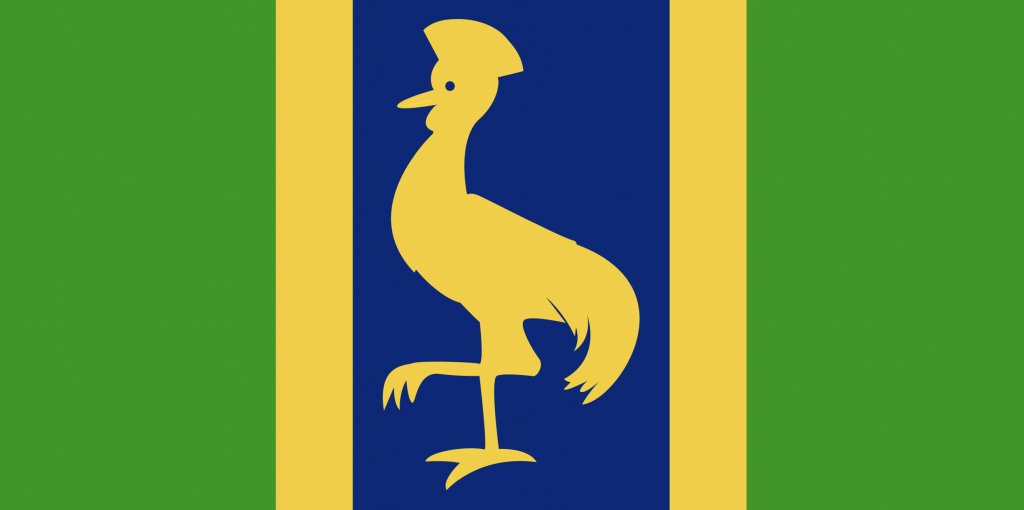
However, this design was unpopular and not seen as very “African.” Therefore, a new national Ugandan flag was introduced when Uganda achieved independence on October 9, 1962, a flag which remains in use today. The flag was designed by Grace Ibingira, a prominent politician and then-Minister of Justice.
The Ugandan flag features six horizontal stripes: black, yellow, and red, repeated twice from top to bottom. The center of the flag bears the emblem of a grey-crowned crane, a national symbol of Uganda.
The symbolism of the Ugandan flag:
Each element of the flag has deep significance for the Ugandan people.
- Black Stripes: The black represents the people of Uganda, a symbol of their identity and unity as a nation and as Africans.
- Yellow Stripes: The yellow stands for the abundant sunshine that the country enjoys, as well as optimism and a bright future for the nation.
- Red Stripes: The red stripes represent brotherhood and unity among Ugandans and between Uganda and the rest of the world, as red is the colour of blood.
- Grey-Crowned Crane: As well as being the symbol of Uganda when it was a protectorate, the bird is known for its peaceful nature and beauty. It is also represented on the flag with a raised leg, which shows the forward movement of Uganda and her people.
You can read more about the meaning of the national flag, as well as Uganda’s other symbols, on the website of the Government of Uganda.
What other flags are used within Uganda?
While the monarchies no longer hold any de jure power, many of them have adopted (or maintained) flags to represent the people of their respective kingdoms.
Buganda, most prominently, has changed its design since independence. It is now represented by a blue-white-blue vertical tricolour, but with the shield and two-spear emblem in the middle.
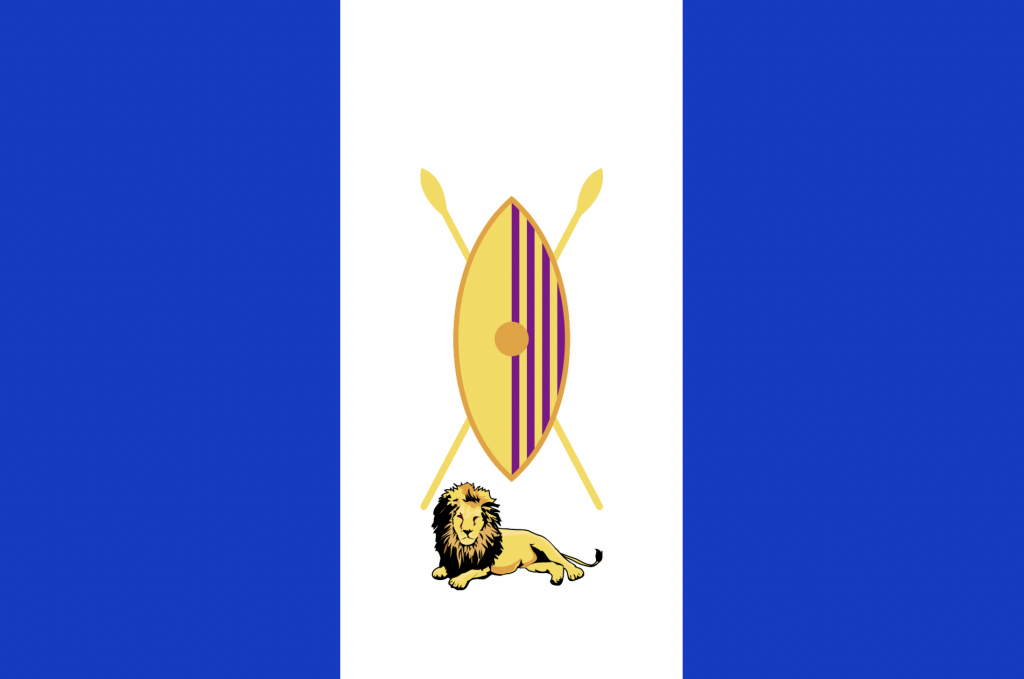
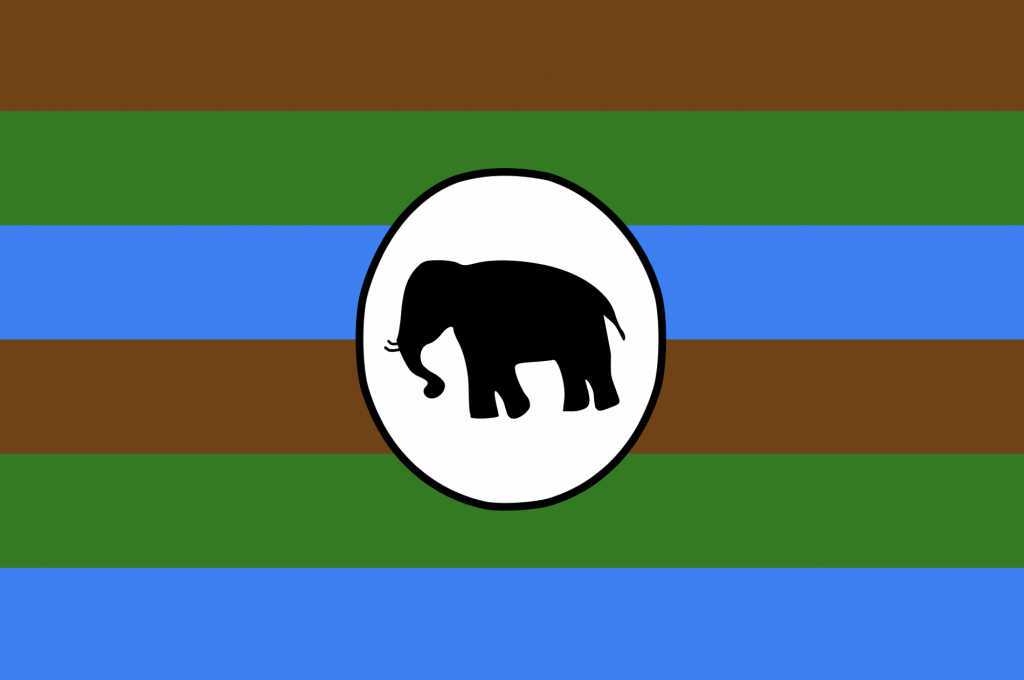
The Acholi people, residing in the northern region of Uganda and speaking a Nilotic language distinct from the Bantu languages spoken elsewhere, have their own flag. This design reflects their unique identity.
At its center is the elephant, the Acholi national animal, mirroring the placement of the crane on Uganda’s national flag. The flag’s brown, green, and blue stripes symbolize the region’s fertility, its lush vegetation, and the rainfall and water bodies of Acholiland. The 6-stripe design is like the design of the national flag, showing the place of the Acholi people in Uganda.
Uganda today through the lens of its flag:
The Ugandan flag continues to be a powerful national symbol, representing the unity and resilience of its people despite challenges throughout the country’s history. Its colours and the image of the crowned crane reflect Uganda’s determination to move forward toward prosperity, peace, and global cooperation.
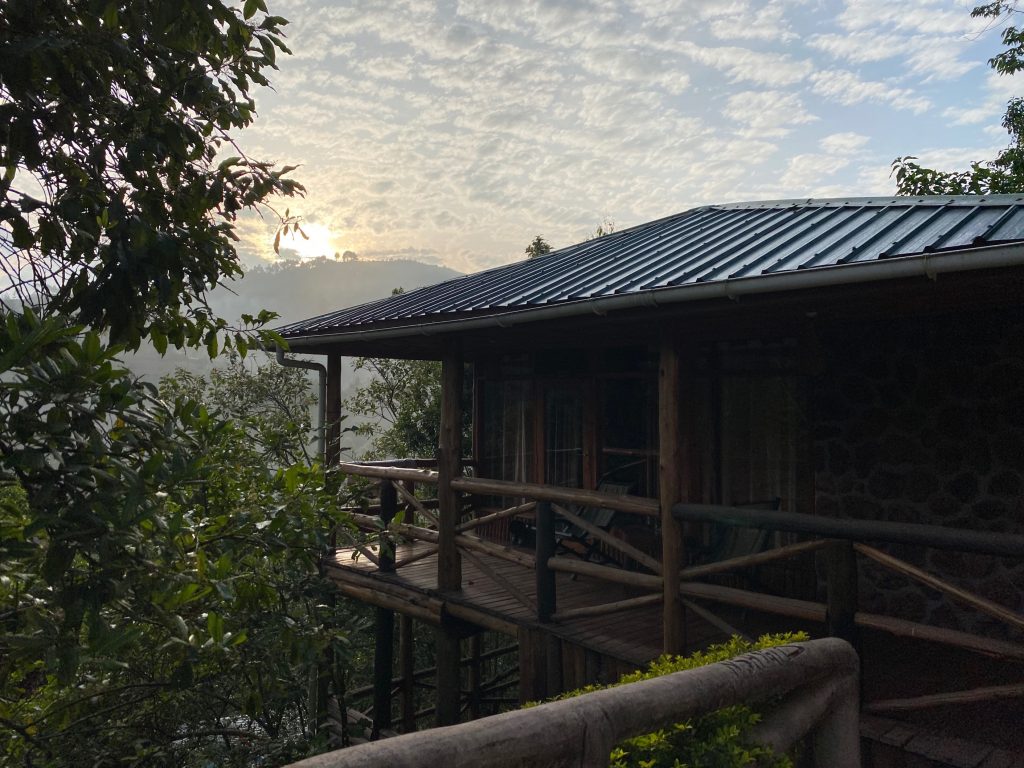
Uganda is now known for its natural beauty, wildlife, and warm, welcoming people. Its flag reflects the nation’s pride in its cultural heritage and its commitment to creating a future built on unity, peace, and progress. Whether you’re visiting Uganda’s capital, Kampala, exploring its national parks, or learning about its rich cultural history, the flag is a constant reminder of the country’s hopes for the future.
How can you see the Ugandan flag for yourself?
YPT’s tours in East Africa offer a perfect opportunity to explore Uganda’s rich culture and natural beauty while learning about the country’s history. On our East Africa Combo tour, we visit Uganda alongside Rwanda, Burundi, and DR Congo, allowing you to explore the wider region.
If group tours aren’t for you, we also offer personalized, private tours tailored to your interests, ensuring you experience all that Uganda has to offer. From safaris to cultural experiences, and from gorilla treks to historical visits, we can help you plan the perfect trip!
For more information, check out our Uganda landing page or get in touch with us to start planning your adventure!





